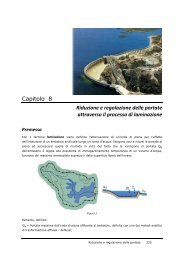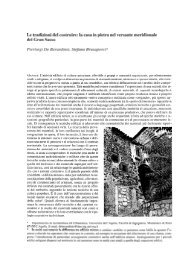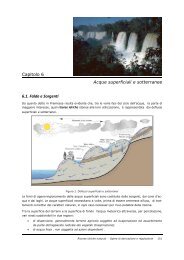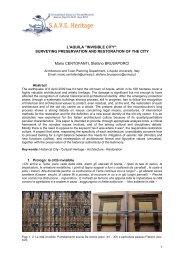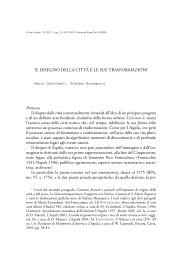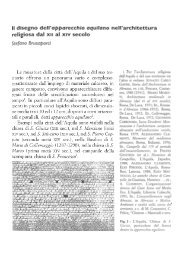Frammentazione ambientale, connettività, reti ecologiche
Frammentazione ambientale, connettività, reti ecologiche
Frammentazione ambientale, connettività, reti ecologiche
You also want an ePaper? Increase the reach of your titles
YUMPU automatically turns print PDFs into web optimized ePapers that Google loves.
<strong>Frammentazione</strong> <strong>ambientale</strong> 135<br />
Habitat fragmentation may directly or indirectly expose the populations to deterministic<br />
factors (e.g., direct persecution, edge effect). When populations are<br />
highly reduced in abundance, stochastic factors may come into play (demographic,<br />
environmental, genetic); these may inhibit the population’s response ability to<br />
changing environmental factors and, thereby, reduce viability.<br />
An insidious effect of fragmentation is the delay induced in some (meta)populations<br />
to die out at local/regional scale (lag effect and extinction debt): i.e.,<br />
species with a long life-cycle may show a response only some generations after<br />
fragmentation, giving rise to a misleading evaluation of the effects. Moreover,<br />
following the decreased availability of habitats, a density increase of some sensitive<br />
population in the fragments, utilized as refugees, can be observed (crowding<br />
effect).<br />
Community level - The alteration of ecological and spatial variables at fragment<br />
scale (size, isolation, shape, quality, etc.) as well as at whole landscape scale can<br />
affect qualitative composition and species richness as well as other parameters.<br />
An increase of richness in fragments may occur due, for example, to colonization<br />
of generalist species from the matrix and to edge effect. The gradual decline of<br />
the more sensitive species, caused by changes in the extinction/colonization rates<br />
(relaxation faunas) and the proportional increase of edge/generalist species, may<br />
induce a species turnover in fragments (cascade effect).<br />
Ecosystem and landscape level - Flows of energy and matter are affected by the<br />
spatial pattern of the landscape. The changes in size, distribution, quality of the<br />
fragments, and in the ecological processes may influence the functionality of the<br />
whole ecomosaic.<br />
Matrix surroundings may affect the edge effect, playing the roles of source area<br />
(providing alternative habitats to generalist species) and of sink for interior species,<br />
as well as modifying the rates of colonization and the between-fragments processes.<br />
Fragmented landscape flows are prevalently controlled by the matrix.<br />
Intra- and between-fragment effects - The main changes in the patterns of distribution/abundance<br />
of the populations of sensitive species in the fragmented landscapes<br />
are due to two classes of mechanisms acting at intra- and between-fragment<br />
spatial scale.<br />
Among the intra-fragment effects, alteration of the habitat quality is the most relevant<br />
in the short term (edge effect). Instead, the between-fragment effect consists<br />
mainly in alteration of the species-specific dynamics. These are related to indivi-



